On the 22nd of this month, October, it will be 25 years since we lost Innes Ireland to cancer. He was a great loss to motor racing and to the Grand Prix Drivers Club because when Innes was around anything could happen and usually did.
Ironically it was also sixty years and two weeks since I first truly got to know Innes and he was a staunch friend through thick and thin. This, then, is a very personal few comments about Innes.
I was on my way to Modena in late September 1958 and stopped off on the way at the little Swiss village of Ollon which hosted a round in the European Hill Climb Championship. It is hard to believe but this Championship was big in those days and on that occasion two of Germany’s leading teams, Borgward and Porsche were battling it out head to head with a bunch of grand prix drivers between them, including Wolfgang von Trips, Maurice Trintignant, Hans Herrmann and Jo Bonnier. I arrived there very much at the last minute and was surprised to bump into Innes Ireland who had brought his Lotus Eleven. He was sitting on the edge of the village fountain, stripped to the waist and contemplating how he might beat the Porsches and Borgwards in his relatively standard Lotus Eleven because he was not yet famous.
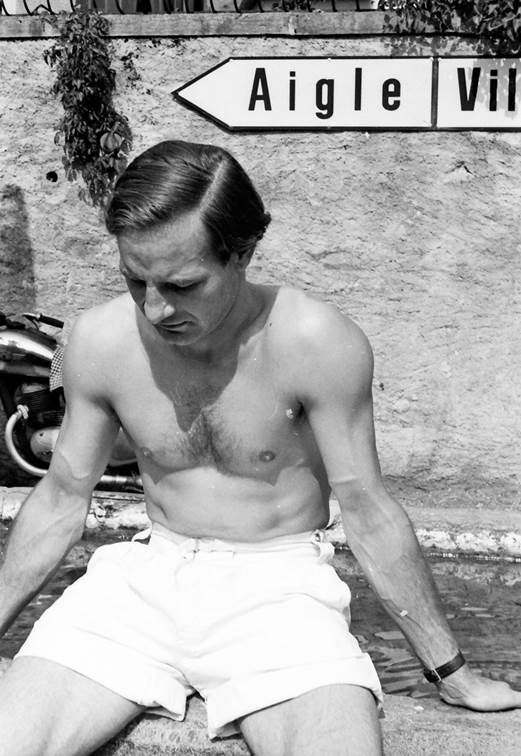
The car had been bought by Rupert Robinson, an army colleague of Innes’s brother and yet here was Innes in Switzerland for a hill climb. Being a fellow Scot I had to ask why he was there when the most he could win was £20 for winning the class. He smiled, winked, and then told me he had persuaded the organisers to give him £200 starting money which was a lot of money in 1958.
Innes duly won his class and so received a cheque for £220 and a pot. Notice that the car has its registration number hand painted on the bodywork and as Innes’s name was Robert McGregor Innes Ireland I wonder if the 100 RMI number was a real British registration number or something Innes cooked up and painted on the car as it had come down on a trailer.
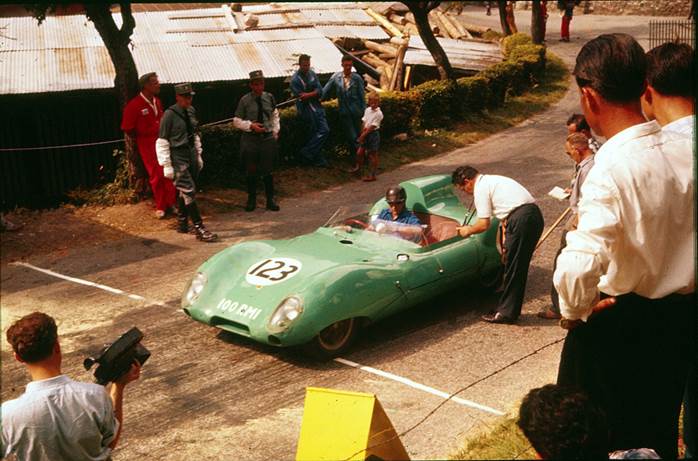
From then on we had many laughs over the years as Innes galavanted through life as though the world was his oyster, always up and rarely down he was simply one of the greatest post-war characters in motor racing.
I recall Ian Stewart, who raced for the Jaguar factory team at Le Mans and was one of the founders of Ecurie Ecosse telling me how Innes had visited him early one year complaining he had no money and then about nine months later Innes was again visiting him and asked Ian if he knew of any Highland estate that might be coming up for sale. The reason for visiting Ian Stewart was that Stewart was one of the first people to take slot car racing seriously. He set aside an entire room in his house in Comrie and built a huge circuit but went further and built his own cars with the most powerful little motors he could find. He then would invite his racing driver friends and they would hold a full two-hour grand prix with wives and girlfriends placed strategically around the outside of the circuit with the job of replacing the cars on the correct track if they went off. Ian claimed that Innes was one of the best slot car racing drivers he ever had at the track.
His links with Jim Clark went back much further than most people realise for Innes’s father was a Ministry of Agriculture Veterinary surgeon whose beat was the Scottish Borders. One of the farms he would roll up to was the one owned by Jim Cark’s brother in law, Alec Calder who had raced a Brooklands Riley and was a founder of Border Reivers. One day Mr Ireland rolled up in his Rolls Royce in which he used to keep a paraffin heater going in the winter time to keep warm. After some conversation, a deal was struck and Mr Ireland went away with the Brooklands Riley with which Innes went out and won the Brooklands Memorial Trophy. Prior to that Innes had raced his 4.5 litre Bentley at Charterhall.
Innes’s days with Team Lotus have been well recorded including all the breakdowns and the accidents but the saddest moment came when, after giving Chapman his first Formula 1 grand prix win at Watkins Glen, was dropped from team Lotus in favour of Trevor Taylor. What happened was Innes visited the London Motor Show and was on the Esso stand and asked about the upcoming Tasman series.
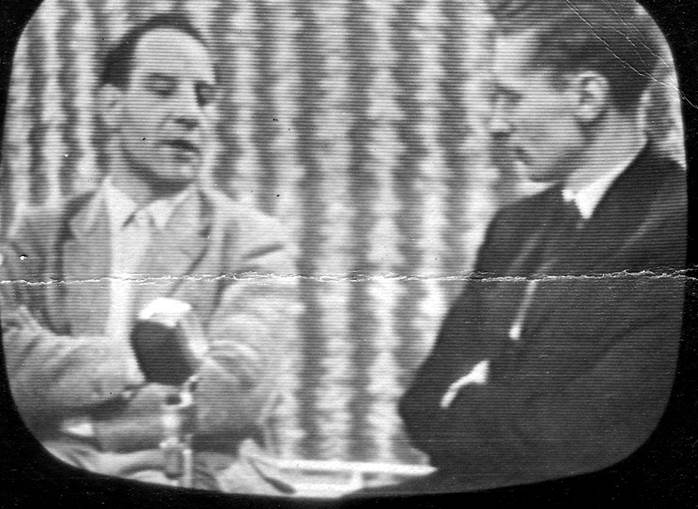
He was advised to have a word with Colin Chapman and when he did was told his services were no longer required and he was out of Team Lotus. Innes was so shocked he couldn’t say anything but two days later he flew up to Scotland and told me about it and I persuaded him to let me interview him on Scottish Television about it where he was more outspoken.
Sadly Innes got it into his head that Jim Clark had engineered his firing from the team and things became difficult. Indeed Jim told me of an occasion at Monza where he felt Innes had deliberately tried to put Jim off the road which would have been disastrous back in those days. Clark never understood what the problem was but when Clark was killed at Hockenheim one of the finest tributes made to him was by Innes in Autocar magazine where he had become sports editor. Later I was with him at his house in the Scottish borders where he had taken up lobster fishing and at one point we talked about Clark. Innes got up and walked over to the window with his back to me and talked about Clark and when he turned around there were tears in his eyes. Innes was a very sentimental man.
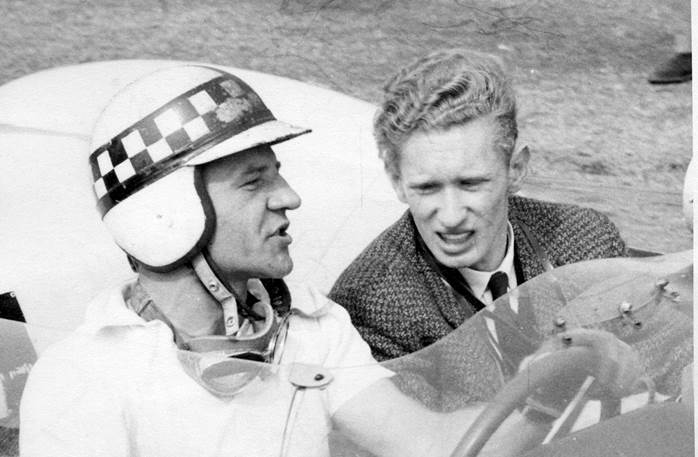
During that period Innes and I came to an arrangement that if at a race meeting, I was marooned out on the circuit and needed a lift back to the pits I would go to the edge of the track on the last lap and put up my thumb. At the British Grand Prix of 1961 Innes was out in the BRP Lotus 19 and duly won the race. I gave him the thumb and he slowed on his slowing down lap, picked me up with my camera gear and blasted back to the pits. I am told you cannot do that now: but Innes was good that way.
Once he had retired from racing he did various things. The lobster fishing ended quite soon and when I asked him why he told me he had found the best lobsters were to be found in amongst the rocks and he kept punching holes in the keel of his fishing boat by going too close to the rocks. He then got the agency for the Snow-Trac which was fundamentally something like an armoured Land Rover on caterpillar tracks. He again telephone and I joined him in the middle of winter on the main road from Edinburgh to Lauder where a farm had been literally marooned for about a week due to a huge snow storm and it was necessary to get food and supplies. Needless to say in stepped Innes with his Snow-Trac which we loaded up and he dashed away over the snow and delivered the goods. I don’t know if he ever sold any Snow-Tracs but it was not long before something else took his fancy.
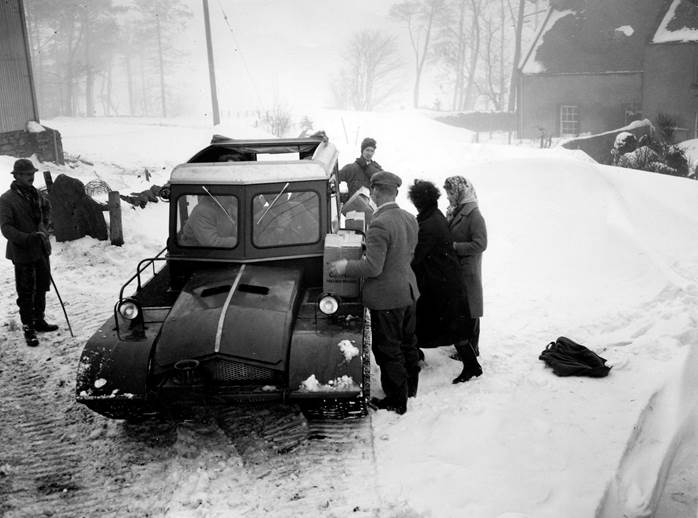
My favourite motor racing story of Innes came when David Murray of Ecurie Ecosse finally offered him his first driver for Ecurie Ecosse with one of their D type Jaguars in the support race for the British Grand Prix. He did well in the race and tentatively asked Murray if perhaps there might be a little prize money for him. Murray replied, “How about twenty fags?” They were duly smoked on the spot.
I held a private dinner for all of Jim Clark’s friends on the 25thanniversary of Jim Clark’s death and Innes was there, by this time beginning to have the serious effects of his cancer. On that occasion, I had arranged for a very special malt whisky blend to be produced by a friend who was the blender at Highland Distillers. Only 180 bottles were produced and each person at the dinner was given a bottle. The hotel was given about 20 bottles so that when the haggis was served at dinner they could sample the whisky without having to open this very special whisky. Needless to say, Innes threw back his haggis glass and then got into his own private bottle. At the end of dinner, he repaired to the bar and whispered in my ear that he had finished his bottle and by any chance did I have a spare he could have. Naturally, another bottle was slipped to him with a nod and a wink. He was the only one at the dinner who manage to get two bottles!
In the final few months of his life, Innes was in great pain but bore it well. When a Czech sculptor presented a superb sculpture of Jim Clark to the Jim Clark Museum Innes was asked to officially hand it over in front of the press at the Jim Clark Room in Duns. Innes flew to Edinburgh airport where Hugh Chalmers, a doctor who did a lot of motor racing, volunteered to pick him up and deliver him to Duns and back to the airport so that he could keep an eye on him. Hugh mentioned that Innes was clearly in pain for the whole journey and yet he gave an amusing and touching speech on the doorstep of the Room and was whisked back to the airport. Literally, a few weeks later, he was dead.
I have deliberately kept this on personal thoughts on Innes and not chapter and verse on Innes and his racing because it is all on the record. However, those of us who knew him well still miss his cheerful banter and often outrageous behaviour. An enthusiastic member of the Grand Prix Drives Club he was a star attraction at any of the Club meetings.
Innes, if you are reading this, have a drink from your old pals.
Graham Gauld
